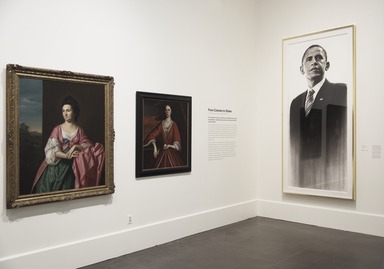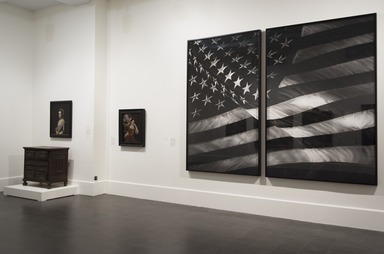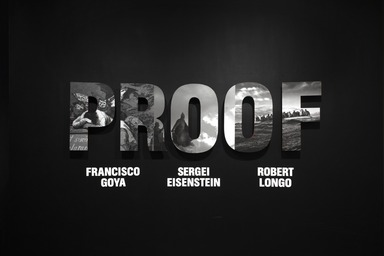

Proof: Francisco Goya, Sergei Eisenstein, Robert Longo, Friday, September 08, 2017 through Sunday, January 07, 2018 (Image: DIG_E_2017_PROOF_01_PS11.jpg Brooklyn Museum photograph, 2017)

Proof: Francisco Goya, Sergei Eisenstein, Robert Longo, Friday, September 08, 2017 through Sunday, January 07, 2018 (Image: DIG_E_2017_PROOF_02_PS11.jpg Brooklyn Museum photograph, 2017)
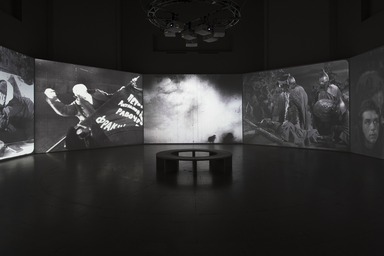
Proof: Francisco Goya, Sergei Eisenstein, Robert Longo, Friday, September 08, 2017 through Sunday, January 07, 2018 (Image: DIG_E_2017_PROOF_03_PS11.jpg Brooklyn Museum photograph, 2017)
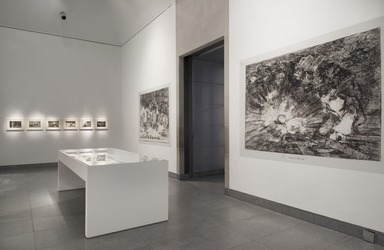
Proof: Francisco Goya, Sergei Eisenstein, Robert Longo, Friday, September 08, 2017 through Sunday, January 07, 2018 (Image: DIG_E_2017_PROOF_04_PS11.jpg Brooklyn Museum photograph, 2017)
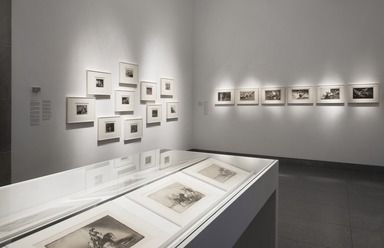
Proof: Francisco Goya, Sergei Eisenstein, Robert Longo, Friday, September 08, 2017 through Sunday, January 07, 2018 (Image: DIG_E_2017_PROOF_05_PS11.jpg Brooklyn Museum photograph, 2017)
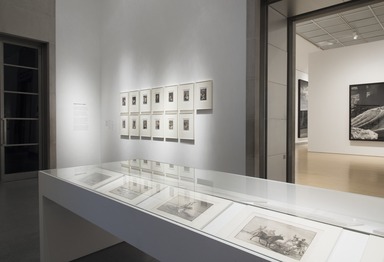
Proof: Francisco Goya, Sergei Eisenstein, Robert Longo, Friday, September 08, 2017 through Sunday, January 07, 2018 (Image: DIG_E_2017_PROOF_06_PS11.jpg Brooklyn Museum photograph, 2017)

Proof: Francisco Goya, Sergei Eisenstein, Robert Longo, Friday, September 08, 2017 through Sunday, January 07, 2018 (Image: DIG_E_2017_PROOF_07_PS11.jpg Brooklyn Museum photograph, 2017)
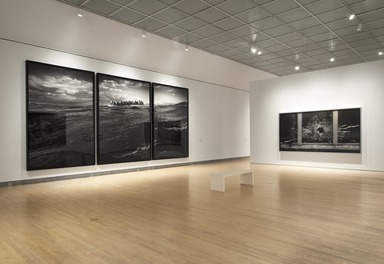
Proof: Francisco Goya, Sergei Eisenstein, Robert Longo, Friday, September 08, 2017 through Sunday, January 07, 2018 (Image: DIG_E_2017_PROOF_08_PS11.jpg Brooklyn Museum photograph, 2017)

Proof: Francisco Goya, Sergei Eisenstein, Robert Longo, Friday, September 08, 2017 through Sunday, January 07, 2018 (Image: DIG_E_2017_PROOF_09_PS11.jpg Brooklyn Museum photograph, 2017)
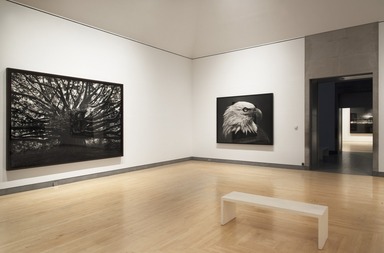
Proof: Francisco Goya, Sergei Eisenstein, Robert Longo, Friday, September 08, 2017 through Sunday, January 07, 2018 (Image: DIG_E_2017_PROOF_10_PS11.jpg Brooklyn Museum photograph, 2017)

Proof: Francisco Goya, Sergei Eisenstein, Robert Longo, Friday, September 08, 2017 through Sunday, January 07, 2018 (Image: DIG_E_2017_PROOF_11_PS11.jpg Brooklyn Museum photograph, 2017)
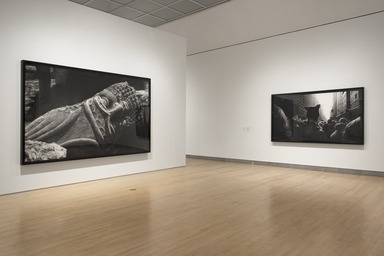
Proof: Francisco Goya, Sergei Eisenstein, Robert Longo, Friday, September 08, 2017 through Sunday, January 07, 2018 (Image: DIG_E_2017_PROOF_12_PS11.jpg Brooklyn Museum photograph, 2017)
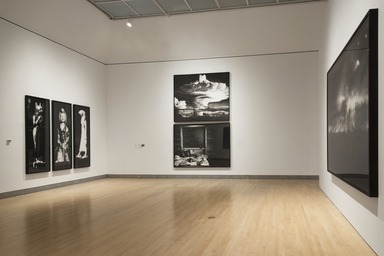
Proof: Francisco Goya, Sergei Eisenstein, Robert Longo, Friday, September 08, 2017 through Sunday, January 07, 2018 (Image: DIG_E_2017_PROOF_13_PS11.jpg Brooklyn Museum photograph, 2017)
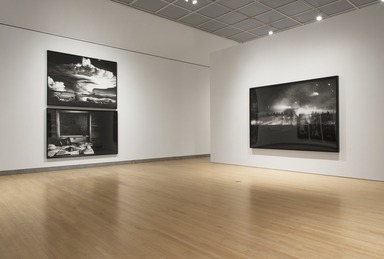
Proof: Francisco Goya, Sergei Eisenstein, Robert Longo, Friday, September 08, 2017 through Sunday, January 07, 2018 (Image: DIG_E_2017_PROOF_14_PS11.jpg Brooklyn Museum photograph, 2017)
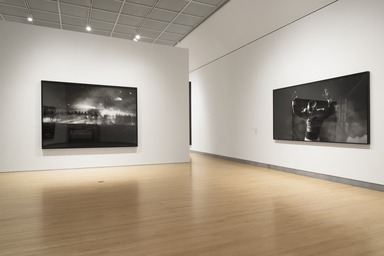
Proof: Francisco Goya, Sergei Eisenstein, Robert Longo, Friday, September 08, 2017 through Sunday, January 07, 2018 (Image: DIG_E_2017_PROOF_15_PS11.jpg Brooklyn Museum photograph, 2017)
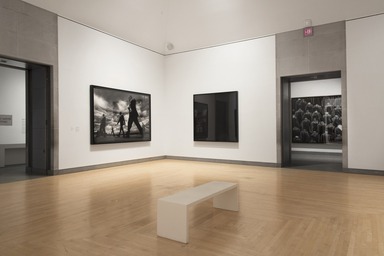
Proof: Francisco Goya, Sergei Eisenstein, Robert Longo, Friday, September 08, 2017 through Sunday, January 07, 2018 (Image: DIG_E_2017_PROOF_16_PS11.jpg Brooklyn Museum photograph, 2017)

Proof: Francisco Goya, Sergei Eisenstein, Robert Longo, Friday, September 08, 2017 through Sunday, January 07, 2018 (Image: DIG_E_2017_PROOF_17_PS11.jpg Brooklyn Museum photograph, 2017)
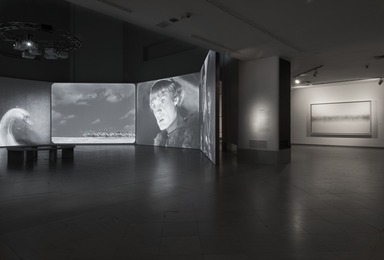
Proof: Francisco Goya, Sergei Eisenstein, Robert Longo, Friday, September 08, 2017 through Sunday, January 07, 2018 (Image: DIG_E_2017_PROOF_18_PS11.jpg Brooklyn Museum photograph, 2017)
Proof: Francisco Goya, Sergei Eisenstein, Robert Longo
-
Proof: Francisco Goya, Sergei Eisenstein, Robert Longo
Proof: Francisco Goya, Sergei Eisenstein, Robert Longo combines the work of three artists across two continents and four centuries, offering insight into the creative energy and artistic innovation with which they reimagined the complex social, cultural, and political issues of their times. Spanish painter and printmaker Francisco Goya (1746–1828), Russian filmmaker Sergei Eisenstein (1898–1948), and contemporary American artist Robert Longo (born 1953) consciously reflect on the profound repercussions of revolution, war, and civil unrest.
This exhibition was conceived by Kate Fowle, chief curator at Garage Museum of Contemporary Art, Moscow, who invited Longo to collaborate as co-curator. Longo has described the project as a study of how he and these earlier artists, both of whom have influenced his work, represent important historical events while introducing political drama, emotional intensity, and visual symbolism. When the artists’ black-and-white works—Goya’s etchings, Eisenstein’s 35 millimeter films, and Longo’s charcoal drawings—are seen together, common threads emerge both formally and thematically.
The works on view also offer uniquely personal perspectives; chronicling is rarely impartial. Proof therefore explores the problematic ways that historical evidence can be used within visual storytelling, and at an especially contentious time, as the line between reality and fiction blurs—think of “reality” television and recent outcries over “fake news.” It signals the enduring importance of bearing witness while interrogating how we witness, and to what end.
Today, at a time of intense debate about the role of the artist—and museums—in raising serious social and political issues and effecting change, Proof demonstrates art’s power to encourage viewers to carefully consider important pictures and histories. As the exhibition title suggests, Goya, Eisenstein, and Longo together provide proof— or evidence—not only of certain facts, but also of how art invites us to see in new ways.
Proof: Francisco Goya, Sergei Eisenstein, Robert Longo is initiated by Garage Museum of Contemporary Art, Moscow, and curated by Kate Fowle, Garage Chief Curator, in collaboration with Robert Longo. The Brooklyn Museum presentation is organized by Sara Softness, Assistant Curator, Special Projects, Brooklyn Museum.
Generous support for this exhibition is provided by Metro Pictures, Galerie Thaddaeus Ropac, and The Faro Foundation. -
Sergei Eisenstein's Films
Sergei Eisenstein was a pioneering Russian filmmaker and theorist from the first half of the twentieth century. Working mainly in Moscow and employed largely by a young Soviet state seeking to stoke revolutionary fervor, Eisenstein often sought subtle ways to circumvent governmental restrictions on his work, particularly later in his life. Concerned with making an emotional impact on his audiences, he developed a renowned theory of “montage,” where visual collisions of unrelated or contrasting images are intended to jolt the viewer into a visceral understanding of events.
In this exhibition the curators have slowed Eisenstein’s films to 1 percent of normal speed, and eliminated sound and subtitles, so that the viewer can see clearly how deliberately he composed each frame. Seven films spanning the three major periods of his career are projected simultaneously in this installation. His three earliest feature films, Strike (1925), Battleship Potemkin (1925), and October (1927–28), celebrate key moments leading to the 1917 revolution that toppled the former regime and made way for a communist government that quickly became authoritarian. While Eisenstein occasionally consulted newsreel footage—with its concrete, linear narrative of historical events—more often he favored images that acted as metaphorical explanations of these events.
Romance Sentimentale (1930), made during years spent abroad in Western Europe and the United States, is devoid of plot, narrative, or political message, and reveals a filmmaker freed from the state’s oversight. Later works include three historical epics, Alexander Nevsky (1938) and Ivan the Terrible, Part I (1944) and Part II (1945–46; released1958), which turned powerful figures in Russian history into allegories of the nation. -
Goya's Etchings
Francisco de Goya y Lucientes served four kings as a court painter in Spain during the late 1700s and early 1800s. While maintaining favor with the monarchy, he nonetheless produced defiantly critical, often shocking etchings. They chronicled the uneasy modernization of Spain, which was marked by state violence, political corruption, religious persecution, and social unrest. Part observation and part invention, many of the etchings remained unpublished in Goya’s lifetime for fear of backlash from his benefactors, but resonated profoundly with the public after his death. It is perhaps noteworthy that he created many of these nightmarish prints after a long period of illness that left him permanently deaf.
The etchings here are from Goya’s four most famous series, all of which reflect the artist’s increasingly bleak outlook on humanity: The Caprices (Los Caprichos); The Disasters of War (Los Desastres de la Guerra); The Art of Bullfighting (La Tauromaquía); and The Proverbs (Los Proverbios), also known as The Follies (Los Disparates). Employing allegory and satire, they showcase Goya’s command of the drawn line and his keen eye for composition, which Eisenstein and Longo would emulate in different mediums and larger scale.
The magnifications to the left reproduce two etchings from The Disasters of War series: The Truth Has Died and Will She Rise Again?, both of which convey important themes for the entire exhibition. These images highlight how Goya achieves the same dramatic intensity at small scale as Eisenstein and Longo do in larger formats. -
Robert Longo
This imposing scale, combined with the medium’s inherent intimacy, represents a sincere attempt to slow down the image, to provoke the viewer to consume its full power. . . . I want to really see them, and I want to identify what they reveal about our world right now.
—Robert Longo
Robert Longo has always thought critically about the circulation, consumption, and power of pictures. Focusing on global current events, as well as historic moments and symbols in art, politics, and science, Longo’s monumentally scaled charcoal drawings reveal an interest in how images participate in telling stories and shaping history. He asks us to confront significant, sometimes highly controversial issues, perhaps as a reminder that addressing those issues is a responsibility everyone shares.
As Goya and Eisenstein did, Longo chronicles his times. He creates drawings in which he translates, juxtaposes, and amplifies images from media and the Internet, some timely and highly charged, and others more historically remote or poetic. Sometimes the subject is framed so that the “action” is located just beyond view, focusing the viewer’s attention on unexpected details or interpretations. Seen together, the drawings distill Longo’s ongoing fascination with humankind’s warring impulses: creation and destruction, reason and madness.
Whereas mass-media images are by definition multiple, Longo’s work is purposefully singular, built up in charcoal often applied as powder or dust. He constructs a provocative ambiguity of mediums—where abstraction and representation coexist—by fusing the grand scale of history painting with the precision of photography within the typically intimate medium of drawing. -
Curatorial Concept
This gallery provides a closer look at the unique trio of artists on view and the curatorial concept behind linking them. The curators aimed to “mess around in history,” to show how artworks can gain new meaning beyond their own historical contexts.
Projected on the wall are a series of triptychs. Each includes, on the left, a reproduction of a Goya etching; in the center, a still from an Eisenstein film; and on the right, a reproduction of a Longo charcoal drawing. Selected and combined by Longo, the triptychs reveal visual correlations and unexpected new meanings through their juxtaposition.
In the table vitrine are materials that provide insight into the working processes used by all three artists, and what they have in common. They all had lifelong drawing practices that amplified their work in several mediums. Drawing often helped them conceive and map out composition, rhythm, and mass in preparation for their final artworks.
Two drawings from Longo’s Heritage series, which are on the wall to the left, are monochromatic re-creations of a painting by Goya and an Eisenstein film still. -
Francisco de Goya y Lucientes
1746–1828
Francisco Goya is one of the most celebrated artists of the nineteenth century. He is often cited as the “founding father” of modernism—both in style, as he turned away from classical academic painting, and in his expressive and intimate treatment of everyday subjects.
Goya was born in 1746, during a period of relative prosperity and progress in the wake of modernizing reforms in commerce, industry, and agriculture in Spain. He was educated by a Roman Catholic teaching order before being apprenticed to a religious painter in Zaragoza who worked as an artistic censor for the Inquisition.
From 1775 to 1791 he was employed by the Royal Tapestry Factory to paint preparatory sketches for tapestries commissioned by the king. In 1780 he was elected to the Royal Academy in Madrid, where he would eventually become Director of Painting. By the end of the 1780s Goya had earned a reputation as a portraitist for government officials and the aristocracy. In 1789 Charles IV promoted him to Court Painter, a position he held for thirty-four years, under three more monarchs.
By the time Goya died in 1828, he had witnessed several remarkable and chaotic political transitions, including the French Revolution of 1789; the subsequent Napoleonic invasion of Spain and the Peninsular Wars of 1808–14; the return of an absolute monarchy that revoked the constitution and reinstated the Inquisition; the Spanish Revolution of 1820; and a second French invasion in 1823. -
Sergei Eisenstein
1898–1948
Sergei Eisenstein was born in 1898 and grew up in Saint Petersburg, Russia. A product of the upper middle class, he was fluent in four languages, widely read, and trained as a civil engineer. Only months after the Russian revolution of 1917 that dismantled the long-standing monarchy, Eisenstein joined the Red Army in service of Lenin’s revolutionary platform.
In 1920 he began work as a designer with the newly established Proletkult Theater in Moscow. Named for the abbreviation of “proletarian culture,” the Proletkult was an experimental federation of avant-garde artists who sought to radically overhaul Russian arts and aesthetics. There Eisenstein learned the craft of directing and began to develop his theories of montage.
His early films, for which he is best known—Strike (1925), Battleship Potemkin (1925), and October (Ten Days That Shook the World) (1927–28)—treat the events of the then-recent revolution. Although all three were funded by the Soviet Union, Eisenstein was given a certain amount of artistic license and enjoyed critical success. However, when Stalin launched his first Five Year Plan in 1928, it signaled the start of political, artistic, and financial difficulties that would affect Eisenstein for the rest of his life.
Eisenstein returned to the Soviet Union in 1932, after three years of traveling in Europe and the United States—including a briefly held contract with Paramount Pictures in Los Angeles—to find the country suffering from famine. Cinema, as all industries, had been centralized by the government, greatly restricting Eisenstein’s film-making from then until his death in 1948. -
The Art of Bullfighting (La Tauromaquía)
Ten selections are on view in the table vitrine from The Art of Bullfighting (La Tauromaquía), a set of 33 etchings created by Goya in 1815–16. The series can be understood as a genealogy of modern bullfighting, tracing the origins of the art of the corrida from its Moorish roots to the sport that existed in Goya’s time. La Tauromaquía has been variously interpreted: some argue that these etchings are in praise of bullfighting, while others speculate that Goya was being critical of this Spanish tradition, denouncing the practice as violent and cruel. The etchings are displayed here like a filmstrip, to accentuate the movement and almost cinematic compositions. -
Storyboarding
In these varied examples—reproductions of Goya paintings; facsimiles of Eisenstein’s sketches for his later films, Alexander Nevsky and Ivan the Terrible, Part I; and Longo’s composition sketches—each artist employs a kind of “storyboarding”: sketches or series that map out a narrative sequence, taking into account the many compositional elements that make up the completed artwork.
This case also includes a closer look at Longo’s research process, including personal volumes on Goya and Eisenstein. A collage at the far end of the table shows how he constructs composites, here with the source imagery for Untitled (Raft at Sea). He then translates the final composite into charcoal, first at small scale, as seen in the unframed studies included here. Photographs taken in Longo’s studio document the progress of two completed drawings displayed in this exhibition and can be viewed on the iPad.
